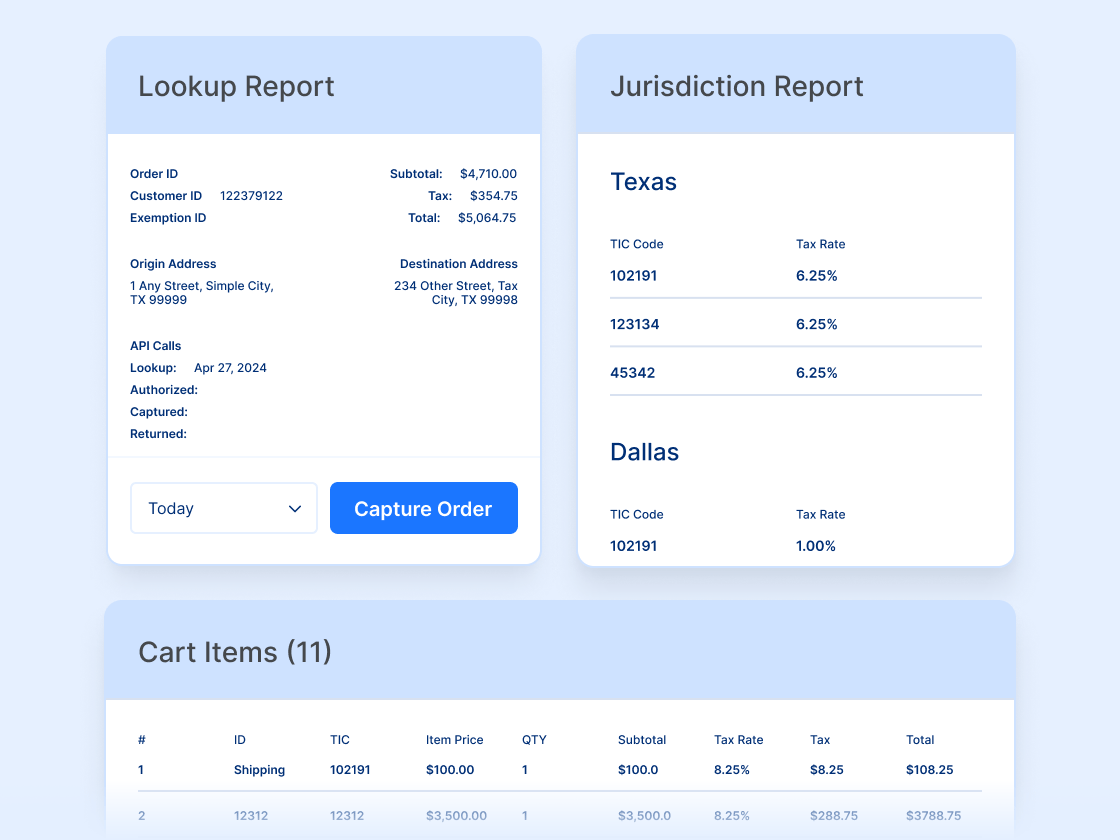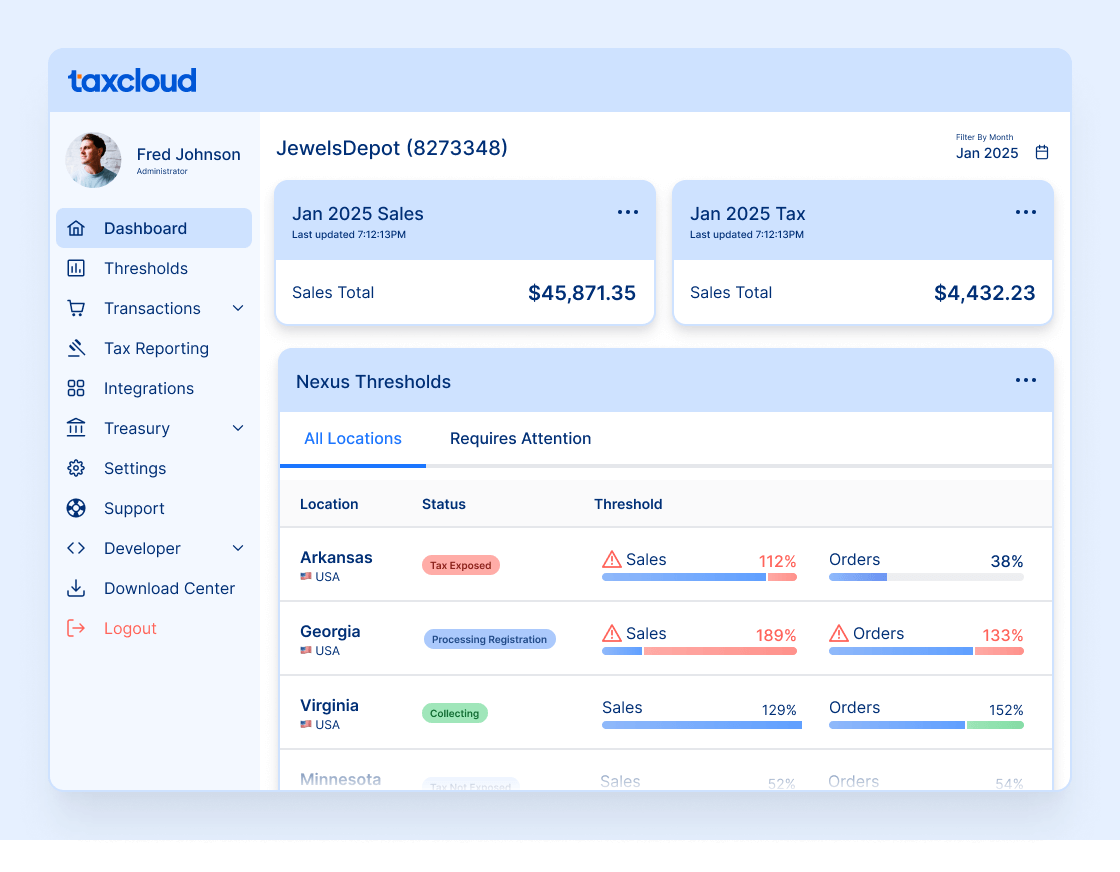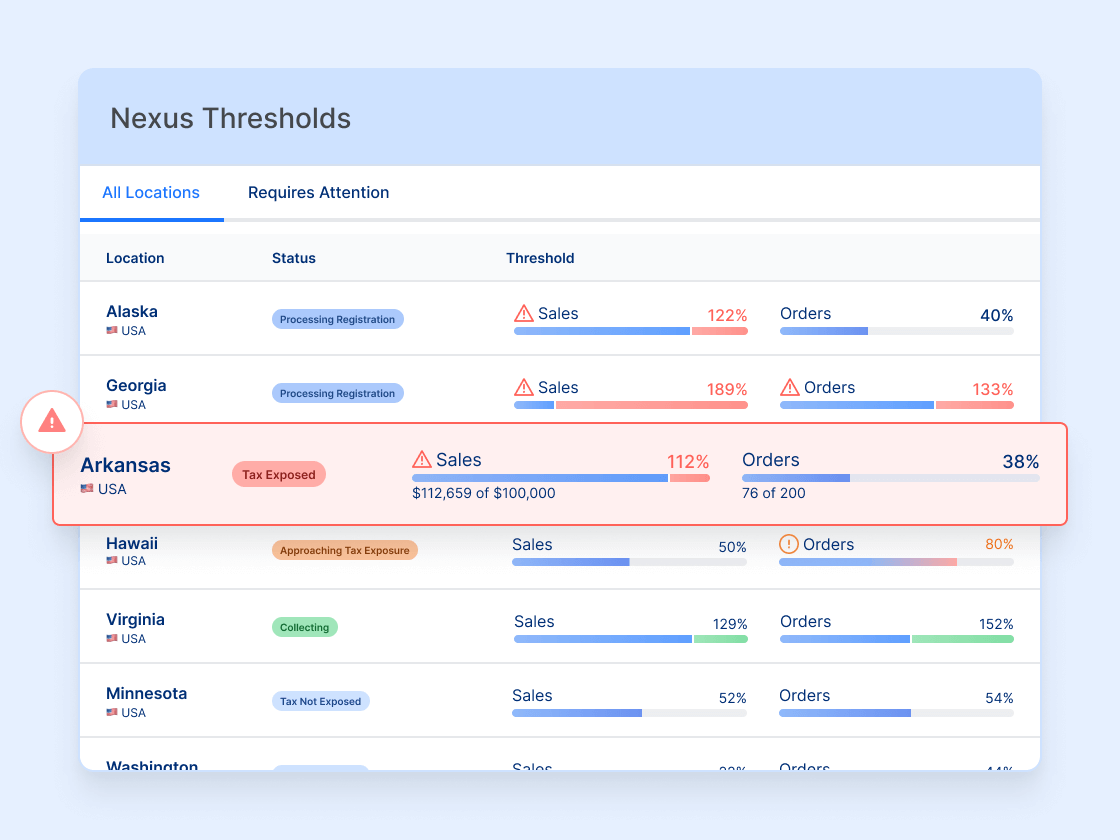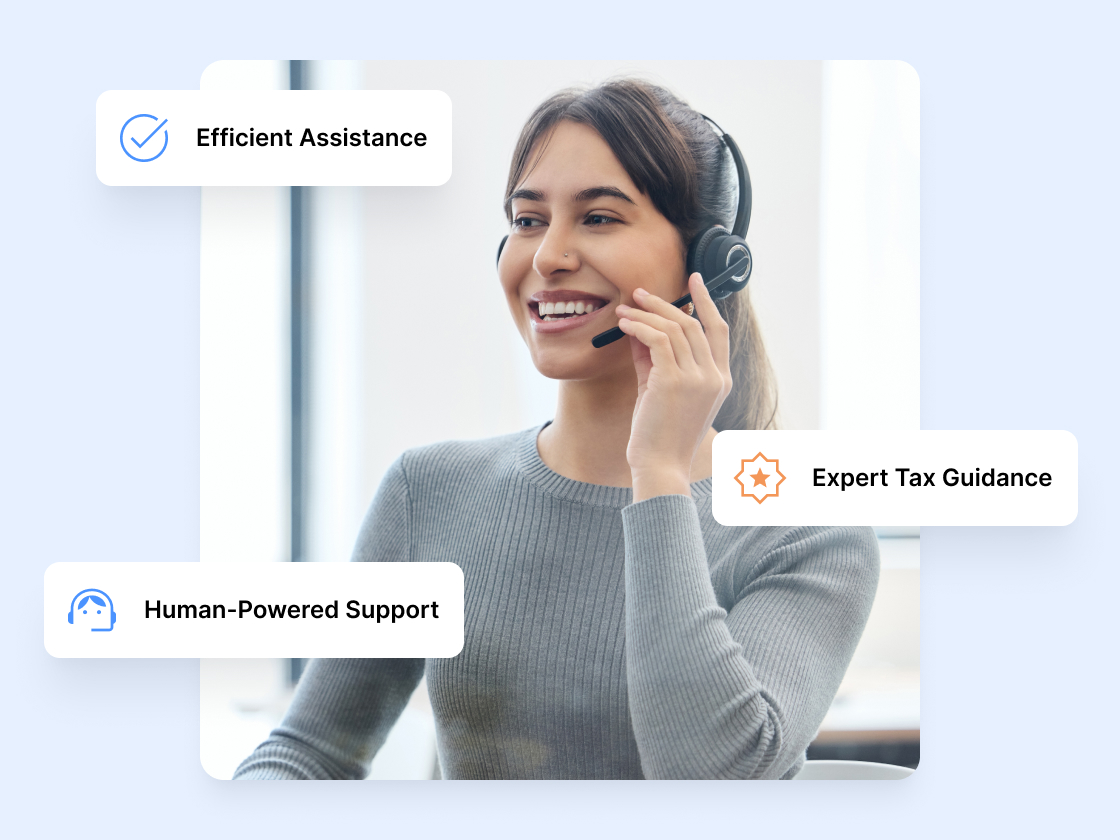Sales Tax for WooCommerce Sellers

Streamline sales tax compliance for your WooCommerce stores. Automate everything from tax calculations and returns to handling exempt sales.
Thousands of customers trust TaxCloud
Why choose TaxCloud for your WooCommerce store?
Easy setup
Integrating TaxCloud with your WooCommerce store is easy. Simply install our plugin and adjust a few settings in your WooCommerce dashboard. Setting up your integration is quick and hassle-free.
Transparent pricing and cost savings
Our pricing options ensure no unexpected charges for usage or hidden fees. TaxCloud is designed to avoid the same pricing pitfalls of our competitors. We will save you money on tax compliance.
Maximum efficiency through automation
We automatically calculate, collect, file, and remit your sales tax. Instantly get accurate sales tax rates for over 13,000 U.S. jurisdictions.

Accurate rates and TICs expertise
Easily start with TaxCloud — no special coding needed. Just assign the correct tax codes to your products, and TaxCloud handles the rest.

Focus on your business, we handle the taxes
No matter where or what you sell, we automate the filing and remittance process to keep you 100% sales tax compliant:
- Preparing and filing your sales tax returns.
- Ensuring timely remittance to the right jurisdictions.
- Managing your tax filings with comprehensive support.

Economic nexus monitoring simplified
Unsure about where you need to collect tax? Send your sales report, and we’ll pinpoint your economic nexus status.

Dedicated US-based customer support
Experience top-tier email, live chat, and phone support from real people. Get personalized help from our knowledgeable team for all your sales tax questions.
What customers are saying
FLUX Defense Accounting
We are a smaller startup in the firearms industry and have only used one state where we’ve been doing all of the tax in house. As we grow we’ve started to worry about nexus in other states. TaxCloud was a great fit for us as it was a cheaper option to track nexus and potentially scale our tax team or compare to other larger (and expensive) services like Avalara.
STH Development
We’ve been using the TaxCloud plugin for WordPress to manage sales tax compliance for our catalog of over 70 stores. With nexus in 31 states, staying on top of varying tax rates and compliance requirements would otherwise require several full-time staff members. TaxCloud has been a game-changer for our business. What we appreciate most is how hands-off it is. Our team doesn’t have time for additional maintenance. TaxCloud has saved us countless hours and has significantly reduced our overhead costs.
Hanahsalas
I have been using Taxcloud for years for my small business. It comes in handy every time I need to report my Sales and Use Tax, which are such a pain. This takes the frustration and confusion out of the Sales and Use Tax process! Aside from the app being easy to use and great the customer service is NEXT LEVEL AMAZING. I have honestly stayed this long bc the customer service is so good.